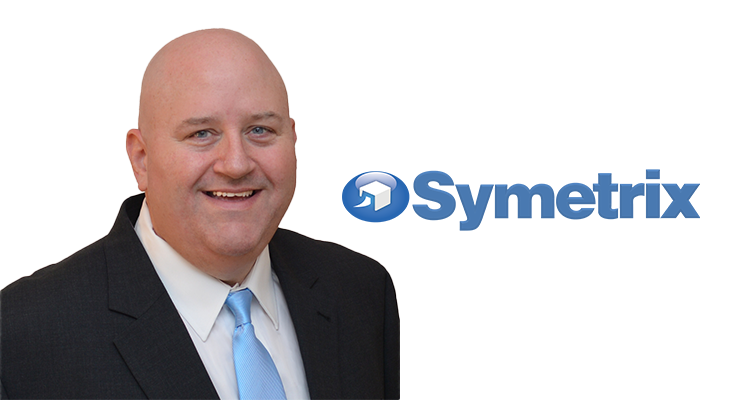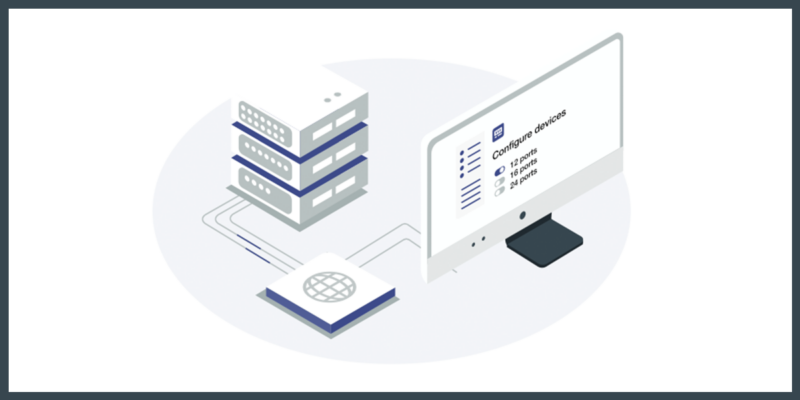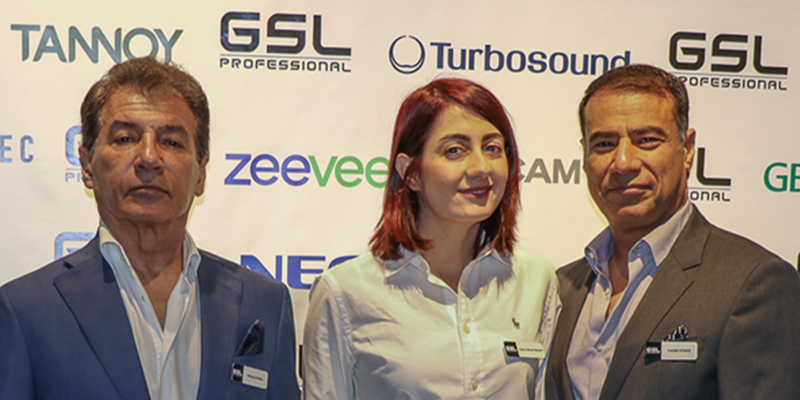An Interview With Symetrix’s Dan Lynch
THIS IS A PROMOTED POST

This is an interview with Dan Lynch, vice president of marketing at Symetrix, as written by Steph Beckett. It has been edited for clarity.
Lynch leads the growth and development of the marketing, product management and technical support teams at Symetrix.
Let’s start with an easy one. Tell me about Symetrix and its history and background.
Symetrix started out making high quality analog processors for recording and broadcast in the ’70s, and as digital signal processor technology became viable, Symetrix digital signal processors consistently provided the highest audio quality available. When commercial digital signal processors were beginning to really explode into the market, Symetrix released the Edge which was the very first DSP with Dante network audio transport. That’s been Symetrix from the very beginning — powerful, flexible, right on the cutting edge of technology, but always maintaining our roots of delivering the highest quality audio. That audio quality beats gimmicks and gee-whiz features every time.
The AV industry is not easy to stay on top of since technology is always changing — that holds true for audio technology as well. How has Symetrix kept up and stayed ahead of this rapidly changing market?
It’s funny when I hear people talk about “keeping up” with technology as though it’s a job shoveling rocks. If you wander around Symetrix, you’re going to find talented musicians, computer geeks, photographers, gamers, long-distance runners, backpackers and a legitimate surfer. We’re a wildly diverse group, but every person you’ll meet shares one common trait: passion. Everyone at Symetrix is passionate about the things they love and passionate people can’t stop themselves from pushing the envelope and trying to learn something new every day. Producing audio, video and control products is our job, but it’s also something we geek out about. So, you heard about a new streaming video codec that’s supposed to set the world on fire soon? Yeah, our gamers have been talking about it for weeks. Somebody has an AI-based audio processing algorithm that can do X, Y and Z in real-time? Of course they do, take a seat and we’ll tell you all about it — because the musicians and computer geeks at Symetrix have been comparing notes on its development since the very first academic paper came out. If keeping up with technology is something you or your company has to work at, you’re just not having enough fun at work.
For an AV systems designer, what are some of the challenges of designing and scaling audio for conferencing?
Large-scale teleconferencing has some interesting complexities in a couple of different directions. You start with the usual suspects, acoustic echo cancellation and microphone automixing, but then you complicate that with the need for voice-lift in larger rooms, usually split into multiple zones, and layered on top of that is potentially the need to handle multiple simultaneous far-end connections. When you start scaling that up, it can be daunting if you forget that complicated audio systems are almost always many simple audio systems connected together. Each individual far-end connection for example, whether you have one or a dozen, is really just the mic mix plus a mix-minus of all the non-mic sources. That’s easy. Individual speaker zones are the same thing flipped around; they’re a full mix of the non-mic sources and a mix-minus of the mics. Also easy. Acoustic echo cancellation is the simplest thing in the world if you don’t psych yourself out; there’s sound coming out of the speakers that I want the AEC to remove from my mics. That’s easy as long as you remember that your AEC reference signal needs to be as close as you can get to exactly the same signal being sent to the speakers.
None of these things are difficult and using an open-architecture DSP system like the Radius NX gives you the tools to build these simple components that work together as the larger system. Creating “complicated” audio, video and control systems is in some ways similar to the task of learning a new language. Learning a language may seem like a huge task, but little kids do it every day by taking it one step at a time. Regardless of the size of any teleconferencing system, the basics are the same; we’re going to need one Radius NX for every 12 mics and enough xIO expanders for the line level I/O devices, we need to decide whether we want to use T-Series touch screens, W-Series remotes, SymVue panels on a tablet, or all of those combined, and then we just fire up Composer and step through each individual, simple bit of the programming. In very little time, you’re ready for 120 mics, 17 voice-lift zones, eight independent far-end sources, and easy control over the whole system.
How has the transition to digital changed audio conferencing?
The increasing flexibility of open-architecture DSPs has allowed a profound change in the way we think about spaces. Twenty years ago, we were building expensive teleconferencing suites that were single-purpose rooms. Nobody would dream of using the teleconference suite to give a presentation to a team because the system wouldn’t work for that. Today, every square foot of real estate needs to be productive in multiple ways all day long and that’s simple when touching one button on a T-5 touchscreen can tell the Radius NX to turn off the mics and switch the display to the HDMI input in the table. An hour later, somebody else walks into the room, touches a different button on the T-5 and the Radius NX sets the room volume back to default, configures the mics for teleconferencing, switches the display to the video conference input, turns on the camera and closes the blinds. In just a few seconds, a collaborative workspace has turned itself into a teleconferencing suite with no need for the user to do anything other than let the system know which mode it should be in.
The types of spaces being used for conferencing, both video and audio, have changed in recent years — traditional meeting rooms are not the rooms people are using to work and communicate together remotely. Huddle rooms and flex spaces are just two of the types of new spaces we’ve seen proliferate. What do designers have to take into consideration, particularly for audio, when designing for these diverse spaces?
Smaller teleconference spaces solve some of their own problems by their nature; a huddle room is usually too small to be horribly reverberant, it’s almost impossible to get too far away from the mic, voice-lift is pointless, etc. Instead, you have to worry about the fact that the customer wants six of them, just on this floor, plus another nine scattered around on the next three floors of the building — and you know exactly what’s going to happen when you submit a bid for 15 complete systems … “thanks for your time, we’ll call you, buh-bye.” Large systems waste a lot of DSP power, but small systems are even worse. Your phone probably has enough processing power for the average huddle room, but even most of the dedicated huddle room devices on the market are more powerful than they need to be. In many cases, it makes much more sense to let a Radius NX handle the processing for multiple rooms and use I/O devices to transport digital audio over the network between the individual rooms and the DSP. Especially when every room on the network is only two milliseconds away, round trip. That lets you use a single Radius NX to handle the all of the processing for up to 16 rooms, including acoustic echo cancellation and brings your cost down to less than $290 per room MSRP for world-class audio processing from Symetrix.
In July, Symetrix released the xIO Bluetooth, a Dante-enabled Bluetooth endpoint available in a single gang form factor. This product is pretty neat because it offers extended range and audio Bluetooth connectivity via the network. Can you tell us more about it?
The xIO Bluetooth is really exciting because we were able to squeeze Bluetooth and Dante into a single-gang device that’s powered by PoE. When you’re trying to fit a Bluetooth device into a podium, or when you need a sleek, discreet installation, a single-gang device is the only practical solution. The fact that you only need to pull a single Cat5 cable to it is just the icing on the cake.
What other big plans does Symetrix have for 2020 and beyond? Any sneak peeks or hints you can give us on what’s coming next?
Well, I’m not supposed to talk about the flying car project specifically, but I can tell you that testing leather seat configurations is only fun for the first 15 minutes or so. Figuring out what Symetrix is going to do in the future is really easy because all you have to do is look at what we’ve always done. We’re going to continue making systems easier and faster to deploy, we’re going to keep finding those odd ways to use existing technology to do really cool things, and we’re going to remain on the leading edge of figuring out the best way to make new technology work for us and our partners.
In a year that has taken a lot of twists and turns — our industry has had to pivot in more ways than I can count. How has Symetrix had to pivot to meet the needs that COVID-19 has created? How have you helped your dealers or end user customers adapt?
The last six months have really shown everyone that we need to make sure we can share our message even when we’re not able to physically visit someone. The number of remote presentations made by our sales team is in the hundreds at this point and we’ve greatly increased both the quantity of electronic resources we offer our partners and also the depth of information in those resources. If we’re not able to come visit a dealer, we need to absolutely make sure that dealer can find the answer to their question quickly and easily.
On the training side, our online Composer Basic Training has been redesigned to make it easier and quicker to navigate and also make it easier for students to refer back to individual sections of the training as needed. With the help of our partners at Audio Americas, we’ve also translated our entire Composer Basic Training program into Spanish and we’ll be rolling out additional languages soon. We recently completed a new studio that allows us to more easily generate training content and we’re presenting at least eight webinars every month with each focusing on a single, specific aspect of Composer programming.
Tell me about a few of the coolest spaces Symetrix has designed audio systems for — I heard you guys have done some pretty cool work for the Yeti store in Chicago.
Yeti has been creating some neat spaces in their new stores. At its most basic, it’s an outfitter store, but it’s simultaneously a coffee shop with a live performance stage. That’s a difficult combination with some heavily conflicting requirements. If you look at the Chicago store, it’s built around the Prism 8×8 which is an absolute workhorse DSP. Lots of power, lots of network audio connectivity, lots of control options and all programmable and controllable very simply. The Werd Company did a great job on that design and installation. When you’re trying to do performance audio in a retail environment, absolute control over the audio is critical and they were able to leverage the power of the Prism DSP along with its easy configurability to produce something really amazing.
I know it’s nearly impossible to say — but what do you think the audio conferencing market will look like in the next five, 10 or even 20 years? Any particular trends you think we should keep an eye on?
Five, 10, or 20 years? That’s the cue to start dropping all of the hyphenated buzz words, isn’t it? Bring in the cloud-based, AI-enabled, multi-platform, cross-functional doohickey that’s going to revolutionize it all, whatever “it” is. That’s all exciting, but it’s similar to saying, “I’m going to use a voice-activated AI system when I fill out a form at the DMV.” That fact that I’m using something high-tech doesn’t make going to the DMV any more fun — and it gets tiring when all anyone talks about is the tools. So, while we might be building and using cloud-based, AI-enabled, multi-platform, cross-functional doohickeys in 10 years, what we’re doing with them will be the important part. From where I sit, it’s pretty easy to see what Symetrix will be doing in 10 or 20 years. Symetrix will be using the best possible technology to solve problems for our customers, we’ll be giving our customers the same products and the same advice we would give to our friends and family, and we’ll be treating our customers and sales channel partners the same way we treat each other. Doing anything else sounds way too much like work, so we’re going to keep finding cool ways to solve problems and have fun doing it.
For more information on how Symetrix can help you reach your customers and end users in the teleconferencing sphere, visit its website here.





